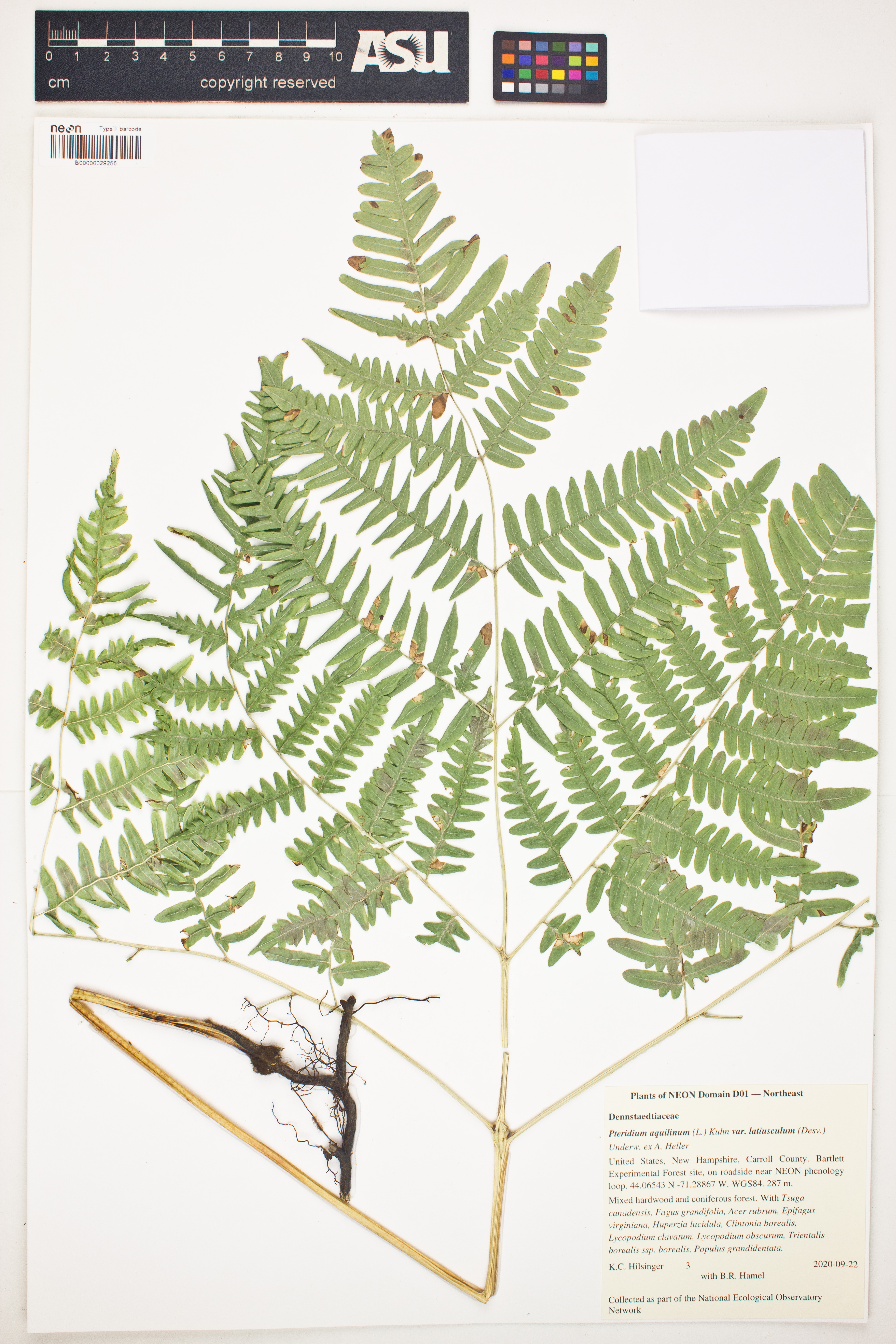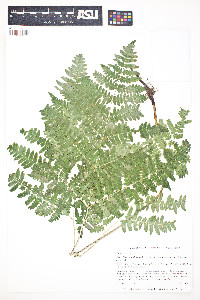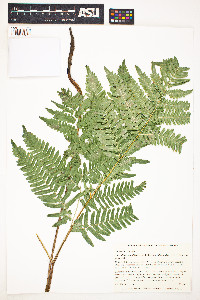|
Pteridium latiusculum subsp. latiusculum
 Explore 5 NEON Biorepository occurrences (redirected from: Pteridium aquilinum var. latiusculum (Desv.) Underw. ex Heller) |
|
|
Family: Dennstaedtiaceae
western brackenfern
[Pteridium aquilinum var. latiusculum (Desv.) Underw. ex Heller] |
|



